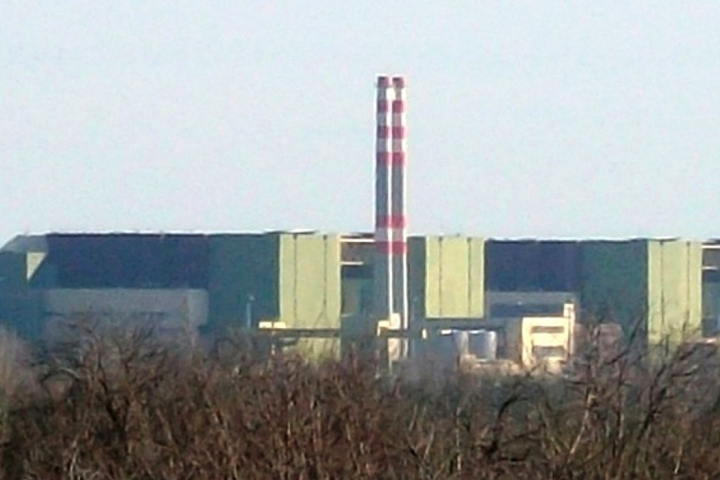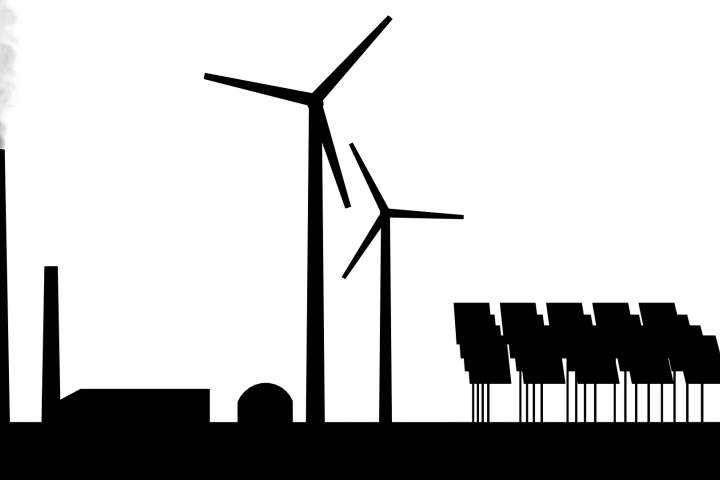The Paks Diaries - April 2024
The aim of this series is to provide monthly overviews of what is happening with the Paks II project, which the Hungarian government wants to accelerate, and the lifetime extension of Paks I NPP. This article reports on April 2024.
Strangely, in April, all communication on the construction plans and status of the planned new Hungarian nuclear power plant was published in the two days at the end of the month. Apart from the information published in the Hungarian press between 24 and 26 April, the only new information which surfaced on this subject was that the Hungarian Atomic Energy Authority (HAEA) approved three investor applications during the month: one for the construction of a steel and reinforcement steel assembly plant, another for the construction of an electrical assembly and administration "complex", and the third for the creation of a "mechanical and thermal assembly works complex". All three approvals are effectively warehouses, ancillary building categories that are not part of the construction of a power plant as defined. It may be revealing, for example, that most of the 27 pages of the text of the decision for the "electrical installation warehouse" lists the conditions that, have to be fulfilled before the start of construction.
More news about Paks I appeared on the HAEA website this month: on 12 April, six weeks of maintenance, repair and refuelling work on the Paks 4 unit was completed, and five reductions in production - typically of 100-150 MW - were reported at the Paks I nuclear power plant.
However, as for the two media-rich days at the end of the month, the Paks II project indeed revealed new information. Two interviews appeared in the Hungarian press: the former Napi.hu, renamed and rebranded as Economx, published a long interview with the CEO of Paks II on 24 April; two days later, Portfolio published an interview - also with Gergely Jákli.
In the first published interview, Jákli repeated the statistics on soil consolidation and piles (but also on the need for a nuclear power plant, which operates day and night, and on the need of Hungarian entrepreneurs, as described in the March Paks Diary), which Péter Szijjártó had already talked about several times, and then answered the question about the launch of Paks II with the usual vagueness: "… we have a very clear timetable to pour the first concrete until the end of this year, which is a huge step towards connecting both units to the grid in the early 2030s." In the absence of specifics, this statement only means “maybe”.
Portfolio was able to learn much more from the CEO of Paks II Zrt. Jákli admitted to the business daily for the first time that the power plant's investment budget could be problematic and that the project could become more expensive. It is only a matter of detail that the Russian investment, also referred to in Portfolio as EUR 12.5 billion, will involve Rosatom companies up to a maximum of EUR 10 billion (the 2014 agreement stipulates that they will participate in the project up to 80 percent of the costs, up to a maximum of EUR 10 billion). But it is not irrelevant that Jákli admitted what Attila Aszódy, János Süli and the current government have all denied: the construction could be more expensive. With the idea that the original budget is still valid with the Russian main contractor, but "if you look at nuclear power plant construction in Western Europe, the planned budgets have never been kept anywhere, so it would be irresponsible to say more now", the CEO de facto announced after many years what was logically deduced on the former Paksaméta blog in 2017: in nuclear power plant construction, time is money, and delay is even more money.
However, there is no sign that the project will stop. According to Jákli, the project is still in flow ("as long as the project is in motion and moving forward, and as long as we look at things from a process perspective, we cannot make any interpretation that there is any need for any huge changes here," he explained), and the goal is still to build the nuclear power plant. However, when the journalist asked about the discrepancy between the unspecified target date and the 2030 commissioning date still in the Russian contract, the CEO of the state project company explained that the construction of the nuclear power plant is such a long-term project that they "have to keep looking for points in its progress" to connect the new plant to the grid "as quickly and safely as possible, in line with the requirements of today's modern age". The purpose of this new type of evasive answer, with its unusual logic, is to avoid saying that they are unable to finish construction by 2030, and they want to finish it sometime at the beginning (middle? end?) of the decade. The purpose of this kind of communication, which is trying to hide the need for flexibility in managing the commissioning deadline, could be that the Hungarian government does not want to end up like the French. They (EdF) have become a laughing stock with their Hinkley Point project, because at each stage of construction they forecast how long it will take to build it, based on current knowledge. And they keep postponing it year by year and making it more expensive than originally estimated (EdF's January deadline and cost update suggests a final bill of up to £34bn (compared to the original £18bn) and that the project will be connected to the grid in 2030 or later rather than 2023, as announced at the start of the project.
CEO Jákli called it just a figure of speech that the Minister of Energy Csaba Lantos said that the connection of Paks II was likely "by the middle of the decade", and the current Network Development Plan of the network operator Mavir and the licence extensions of the Atomic Energy Authority (HAEA) show that the administration is already predicting the delivery of the two units by 2033-2034. The CEO claims that, in practice, these are all the same target date: early 2030. What is also new in his communication about Paks II is that Jákli is quite clear that the construction contract has to be amended, but that ultimately the European Commission will have to give its consent - which he admits is unprecedented in key issues (which means that Brussels will decide whether the necessary amendments to the Paks II construction contract can be made!) It is also true, however, that the project and the loan agreement in its current form are not sanctioned by the EU.
According to Jákli, the Russian war in Ukraine and the EU sanctions had only a marginal impact on the loan agreement. However, it is clear from the statements made in various parts of the interview that the construction itself is unlikely to go ahead as originally planned, with the original players. The 40 per cent participation of Hungarian contractors is questionable, as is the performance of the Western partners subcontracted by the Russians (in particular, Germany's Siemens Energy, who are still not allowed to supply key control and defence equipment as part of a consortium with France's Framatom). This brings us to the Chinese, whose participation in the Paks II project has been discussed by the CEO of the state-owned company, who said that although he did not see a point (or rather, he personally did not see a point) where Chinese companies could join the Paks project, he could not rule out the possibility of Chinese participation in the Paks II project.
Between the two interviews published on 24 and 26 April, the only news that made it into the Hungarian press was that the zone melt trap for the Paks II-1 (Paks 5) unit had been completed in Russia. But Index, which reported on the news, did not explain that the delivery of the 730-tonne castings to the site is still uncertain. The original plan had been to transport the monstrosity to Paks via Ukraine, but the Russian war has made this unthinkable. As the industry magazine “Magyar Építők” wrote, the plan now is to transport the vessel to its destination in pieces, by water. But it is still difficult to imagine it on a map at the moment because, for example, neither Paks nor any other Hungarian (Danube) port is currently equipped to unload cargo of this size and weight, and the low water level of the Danube in summer makes this kind of targeted, rapid, fast loading doubtful.
The article in the construction industry magazine did say that the steel tank casting project started in August 2022, and that after assembly it was inspected by Hungarian experts who were allowed to visit the (unnamed) site, but the magazine did not mention that, that this equipment was cast and built by the investor on its own account, nor that its delivery to the site does not mean that the zone melt trap can be installed in the trench (not yet built and not yet covered in concrete). The Paks II project still does not have a construction licence, and it is questionable whether or not the zone melt trap, built to Russian technical standards, will meet EU safety and technical requirements. If the answer is yes, and it arrives by some adventurous route, it will have to be placed in storage for the time being. The same is true for the latest "milestone" announced by Péter Szijjártó on 26 April. The Minister of Foreign Economic Affairs announced that the Russians had begun manufacturing the reactor vessel in St Petersburg. However, at the time there was no mention of this on Rosatom's official website, where all the projects are reported.
Nobody in the Hungarian press noticed that the announcements at the end of April were all published around the day of the Chernobyl nuclear power plant tragedy. There is no apparent intent or sign of manipulation, but Hungarian newspapers and journalists probably forgot about the anniversary of the 1986 nuclear plant disaster and did not report anything about it. The only place where the Chernobyl disaster was commemorated on 26 April was the website of the Hungarian Atomic Energy Authority.







